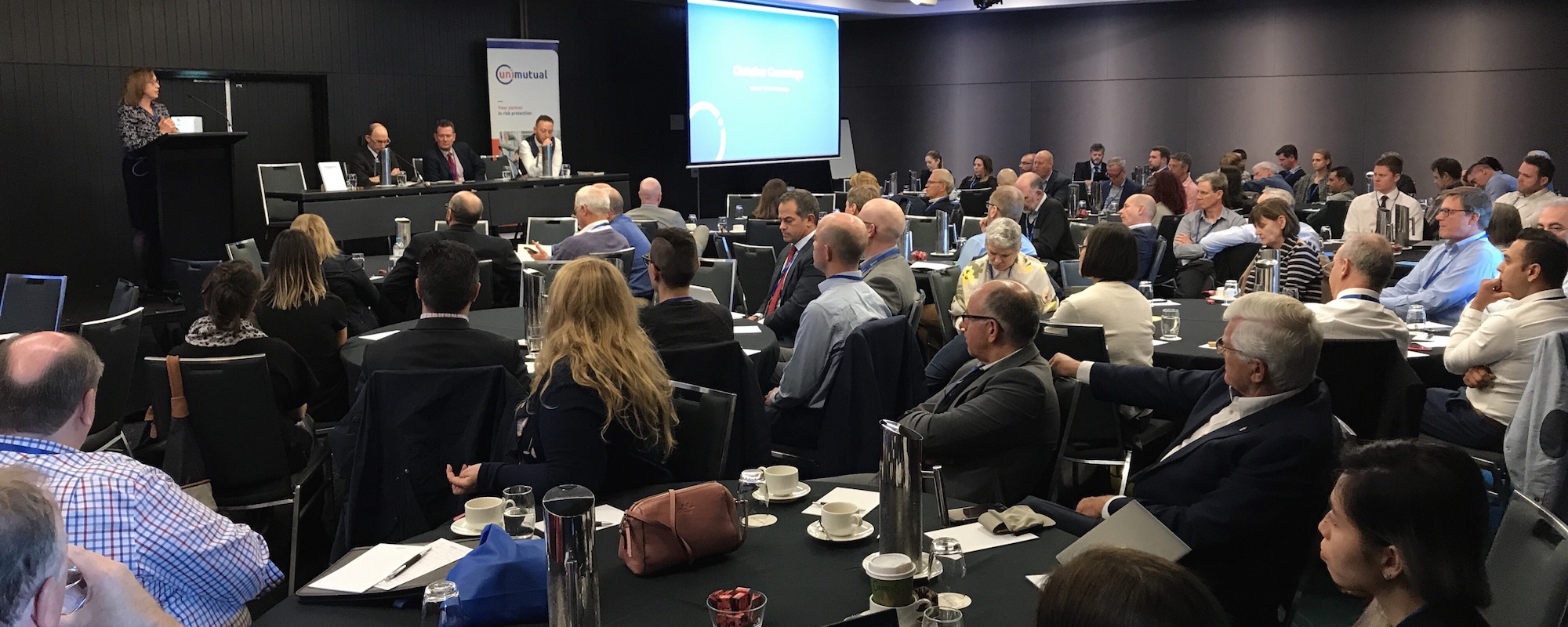
Unimutual Membership Renewal Update
September 25, 2018
Taking The Big Risks: Unimutual’s 2018 Conference
October 25, 2018How hacking the addictive nature of social media could make us better risk takers
Harry Rosenthal, General Manager, Risk Management Services, Unimutual
It is impossible to walk the streets today and not notice our country’s current screen addiction. It seems as if everyone is glued to their mobile device – on trains, in restaurants, and standing on street corners. In the beginning, I thought it might be a generational issue, the downside of being a digital native. However, after investigating articles on persuasive technology – and specifically smartphone addiction – I now realise that this is addiction by design, the result of intentional computer programming by brain experts. We just can’t help it.
From a risk viewpoint, the strength of this addiction is astounding. For example, Facebook recently had a reputational nightmare on its hands when it was revealed that personal information about 87 million users was sold to a private company. To risk managers at most other organisations, such adverse publicity – which included US congressional hearings – would have presented a long-term, widescale problem. However, after a brief period of decline following the revelation, Facebook users have, on average, resumed their normal levels of engagement in the application, even knowing aspects of their data are up for sale. They just won’t – or can’t – stop. While part of the story may be that planet-changing utilities like Facebook and Twitter provide irresistibly valuable services to the world, keeping billions of people connected, another view could say it is exactly what it looks like: an addiction phenomenon.
Leaving aside the ethical implications for a moment, could we use our knowledge of such addictions for some social good?
So why is it so addictive? While we know the benefits of using the internet, social media and chat applications, I suspect that by now most of us also know that we are their “products”. Firms like Google, Facebook, and Amazon, make their billions by selling our attention to third parties like advertisers, marketers, and political strategists. The more “eyeball hang time” (4) – the duration of time we linger on a website, and a measure of our loyalty – the more valuable we are as products to be sold to third parties. Therefore, these companies’ programmers employ software and machines to maximise your ‘need’ to spend time online, rewarding you for lingering on a particular site and shepherding you on to another site based upon the data-wake you’ve created in the past and their knowledge of human neuroscience. It’s mind control, by machine.
Addictive Risk Management Information Systems
Leaving aside the ethical implications for a moment, could we use our knowledge of such addictions for some social good? It looks like addictive social media software systems are here to stay; it’s no use fighting them. But what about joining them?
For many years, risk professionals have watched an evolution in risk management information systems (RMIS) as they have grown in utility over time. RMIS have evolved from basic spreadsheets and relational databases to become useful tools for the management of risk in the workplace. While the products have developed over time, there are still improvements that could be made to allow systems to contribute to organisational risk culture, beyond just meeting the requirements of compliance and governance.
For example, many current RMIS systems have expanded to connect easily with other corporate databases and mobile devices, thereby streamlining data entry and reporting. All data and applications are stored online, and many products of this generation of RMIS were designed to solve a significant problem for the risk manager: namely, reduce the excessive amounts of time spent manually loading data. The solution to this problem came from online connectivity and the development of apps, which meant that data entry could now be done by anyone with a mobile device and the correct permissions. It included other functions as well, such as bespoke risk register creation and reporting. Overnight, it changed the risk professional from data entry operator and report creator, to a project manager for their organisations by using the RMIS to see what was happening, because the data for the RMIS was now being loaded directly by the users themselves. It welded together numerous risk-related reporting, as well as risk registers and compliance activities; including incident recording, workers comp management, and insurance reporting.
5 ways RMIS could use social features
Now that staff are doing the heavy lifting of the RMIS such as pulling their own reports, entering information on losses, or completing their risk register updates, can the systems also be used to improve or increase risk culture? Do we see anything in the addictive software of social media which will move RMIS from a compliance tool to a risk culture tool? If so what would we need to borrow from Facebook, Twitter, and Instagram, to promote a culture that would addict the organisation to taking smart risks? My suggestions are:
- Use software to create a community of your best risk takers. Think of a Facebook group of people in the organisation who embody the risk culture you are trying to create. Give them access to corporate loss data so they could assist in forecasting too.
- Use software to rank your organisation’s desired risk management behaviours by creating public leader boards to show progress or achievements. The simplest examples would include risk register completion rates, review cycles, incident report, loss investigations, root cause analysis, etc. Each business unit can be ranked on how well it achieves activities and outcomes.
- Create a risk journal featuring stories of corporate risks taken, including those which were successful and those which failed. Ensure the organisation knows what “smart risk” is and that it is encouraged.
- Create RMIS “like” buttons where staff can affirm each other’s risk initiatives and outcomes. Let staff support each other, and receive recognition that others are supportive of their efforts.
- Let the software also teach. Display the role of risk management in position descriptions at the organisation. Make it a demonstrable skill, needed for promotion. The RMIS could have a program which matches risk leaders who can act as mentors, to mentees that wish to acquire such skills for advancement.
Once you understand the risk culture that your organisation wishes to create, and what your organisation regards as smart risk taking, the RMIS should foster and promote the growth of that culture. This will be achieved through ensuring the computer system gives reliable data and fosters making human connections in the organisation; identifying risk leaders; and connecting them with those who want to become risk leaders as they receive status and recognition through the RMIS.
This would transfer RMIS from compliance and a tool for rote risk management into a force for cultural change in your organisation – a change that can only come from understanding human risk behaviour and attitudes, and fostering and promoting those behaviours and attitude. The designers of the large, online services companies have learned how to do this, admittedly to make you a more valuable product for their customers. But we could be using the same skills to improve the management of risk in our organisations. The same technology can be used for public good, and to develop and create opportunity for staff. I am certain all organisations believe that their future relies on staff taking smart risks to deliver their strategic futures: maybe the RMIS can be part of that process, instead of simply keeping score. It might be worth being addicted to something like that.
In periods of normalisation of risk issues, risk professionals should closely examine the environment for topics where they can engage at a strategic level writes Harry Rosenthal. Read the full article to find out which topic is the current forerunner.



